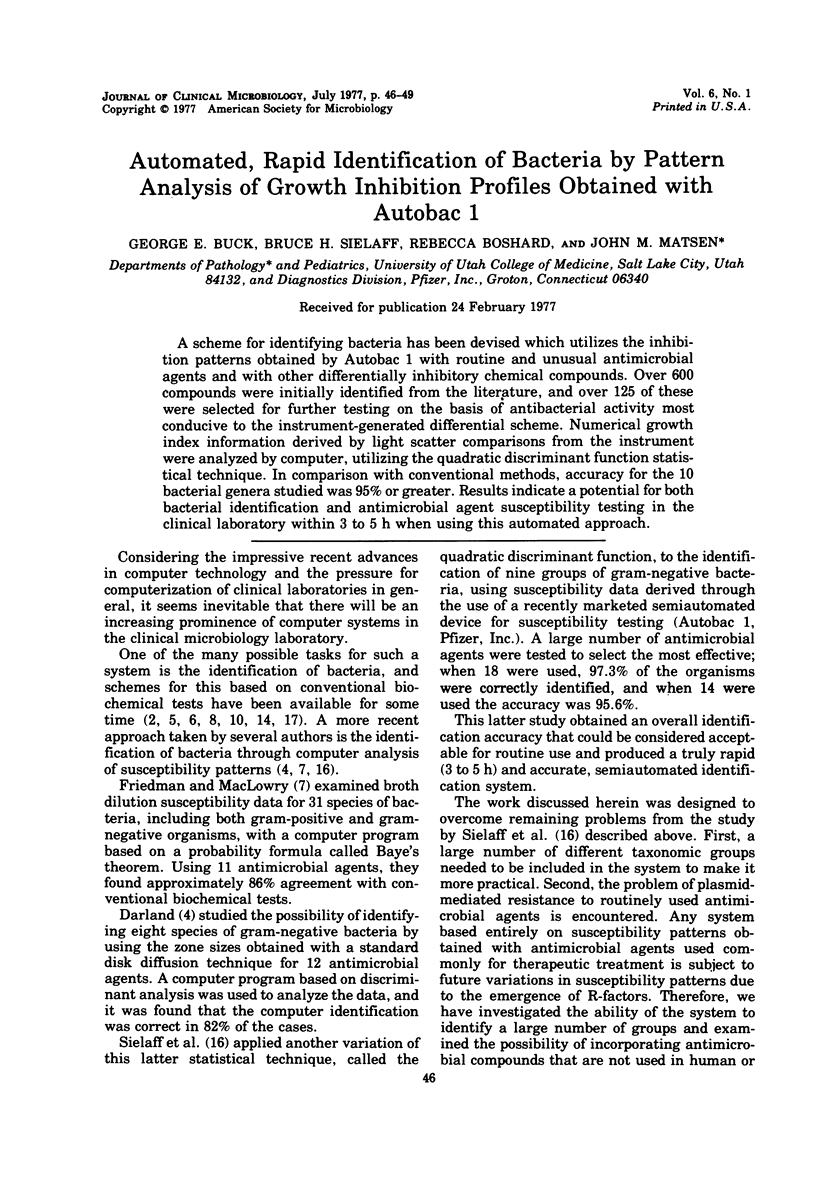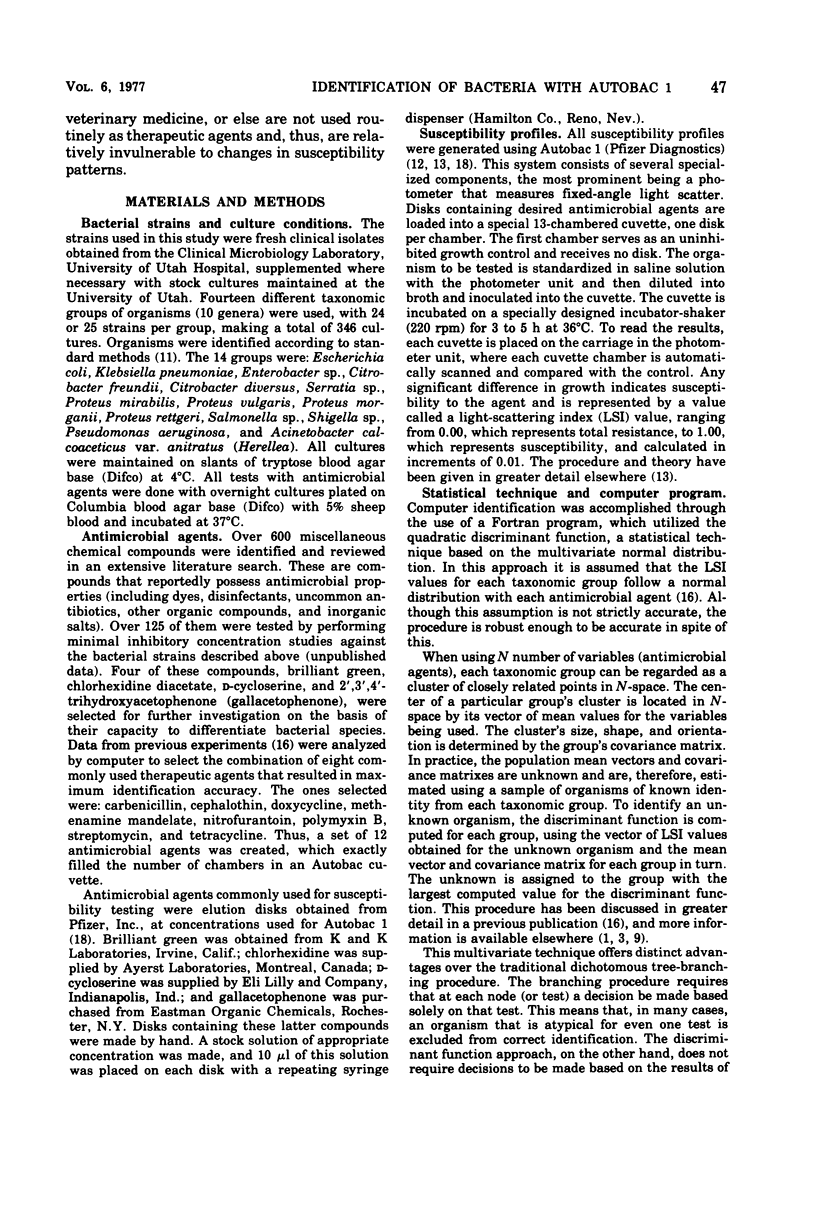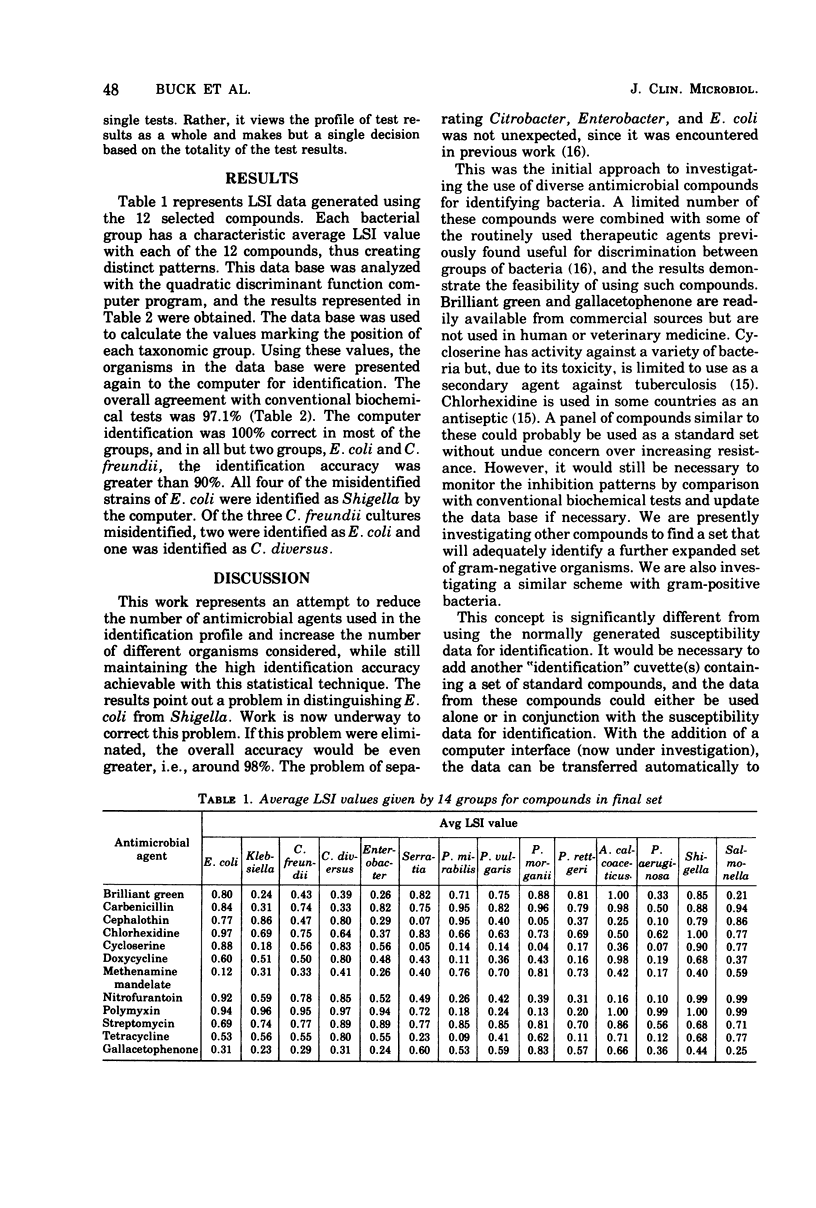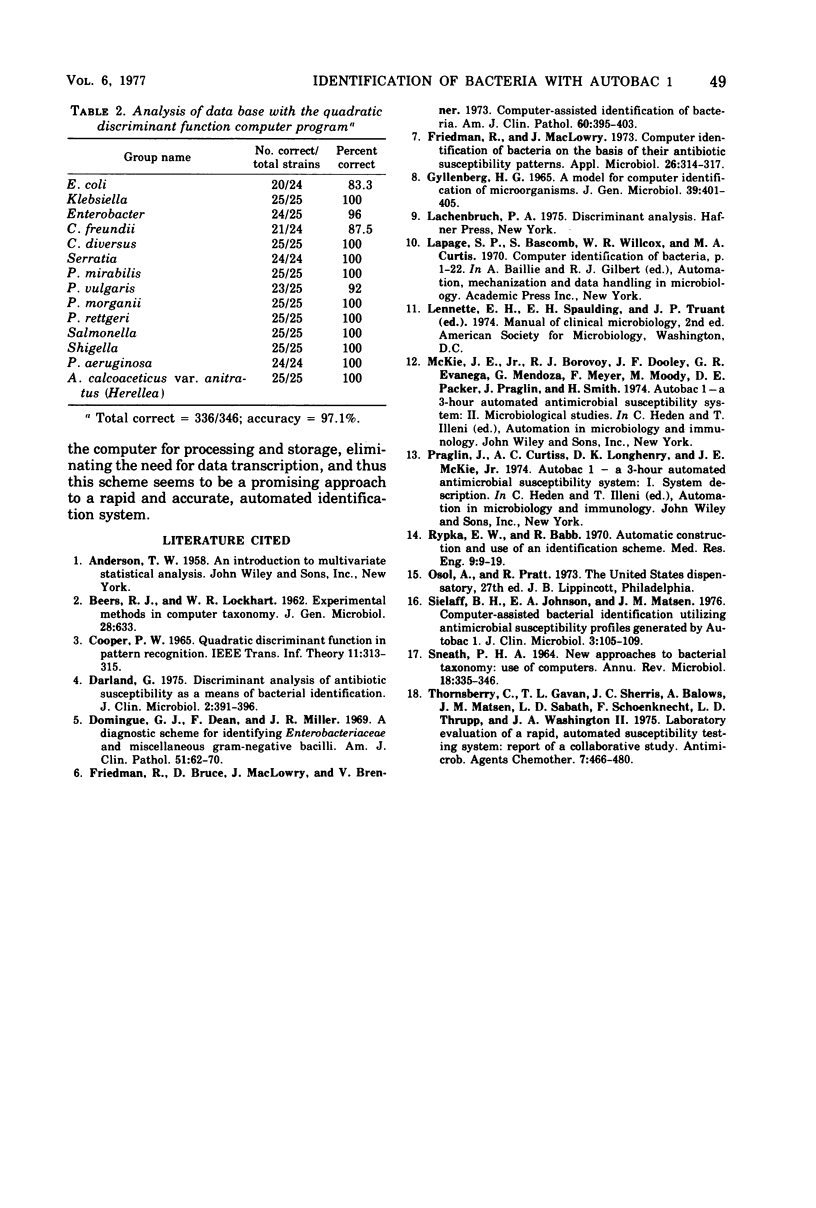Abstract
A scheme for identifying bacteria has been devised which utilizes the inhibition patterns obtained by Autobac 1 with routine and unusual antimicrobial agents and with other differentially inhibitory chemical compounds. Over 600 compounds were initially identified from the literature, and over 125 of these were selected for further testing on the basis of antibacterial activity most conducive to the instrument-generated differential scheme. Numerical growth index information derived by light scatter comparisons from the instrument were analyzed by computer, utilizing the quadratic discriminant function statistical technique. In comparison with conventional methods, accuracy for the 10 bacterial genera studied was 95% or greater. Results indicate a potential for both bacterial identification and antimicrobial agent susceptibility testing in the clinical laboratory within 3 to 5 h when using this automated approach.
Full text
PDF



Selected References
These references are in PubMed. This may not be the complete list of references from this article.
- BEERS R. J., LOCKHART W. R. Experimental methods in computer taxonomy. J Gen Microbiol. 1962 Sep;28:633–640. doi: 10.1099/00221287-28-4-633. [DOI] [PubMed] [Google Scholar]
- Darland G. Discriminant analysis of antibiotic susceptibility as a means of bacterial identification. J Clin Microbiol. 1975 Nov;2(5):391–396. doi: 10.1128/jcm.2.5.391-396.1975. [DOI] [PMC free article] [PubMed] [Google Scholar]
- Domingue G. J., Dean F., Miller J. R. A diagnostic schema for identifying enterobacteriaceae and miscellaneous gram-negative bacilli. Am J Clin Pathol. 1969 Jan;51(1):62–70. doi: 10.1093/ajcp/51.1.62. [DOI] [PubMed] [Google Scholar]
- Friedman R. B., Bruce D., MacLowry J., Brenner V. Computer-assisted identification of bacteria. Am J Clin Pathol. 1973 Sep;60(3):395–403. doi: 10.1093/ajcp/60.3.395. [DOI] [PubMed] [Google Scholar]
- Friedman R., MacLowry J. Computer identification of bacteria on the basis of their antibiotic susceptibility patterns. Appl Microbiol. 1973 Sep;26(3):314–317. doi: 10.1128/am.26.3.314-317.1973. [DOI] [PMC free article] [PubMed] [Google Scholar]
- Gyllenberg H. G. A model for computer identification of micro-organisms. J Gen Microbiol. 1965 Jun;39(3):401–405. doi: 10.1099/00221287-39-3-401. [DOI] [PubMed] [Google Scholar]
- Rypka E. W., Babb R. Automatic construction and use of an identification scheme. Med Res Eng. 1970 Apr;9(2):9–19. [PubMed] [Google Scholar]
- SNEATH P. H. NEW APPROACHES TO BACTERIAL TAXONOMY: USE OF COMPUTERS. Annu Rev Microbiol. 1964;18:335–346. doi: 10.1146/annurev.mi.18.100164.002003. [DOI] [PubMed] [Google Scholar]
- Sielaff B. H., Johnson E. A., Matsen J. M. Computer-assisted bacterial identification utilizing antimicrobial susceptibility profiles generated by autobac 1. J Clin Microbiol. 1976 Feb;3(2):105–109. doi: 10.1128/jcm.3.2.105-109.1976. [DOI] [PMC free article] [PubMed] [Google Scholar]
- Thornsberry C., Gavan T. L., Sherris J. C., Balows A., Matsen J. M., Sabath L. D., Schoenknecht F., Thrupp L. D., Washington J. A., 2nd Laboratory evaluation of a rapid, automatic susceptibility testing system: report of a collaborative study. Antimicrob Agents Chemother. 1975 Apr;7(4):466–480. doi: 10.1128/aac.7.4.466. [DOI] [PMC free article] [PubMed] [Google Scholar]


